
It’s the first Thursday in February in the warm town of Portegolpe, Santa Cruz and a dozen girls enter the community center. Some are tall, dark-skinned, straight hair, curly, others are small, smiley, shy and some talkative. They’re all very different, but they have one thing in common: they come to the girls club to learn about female empowerment.
It sounds abstract, but with simple phrases these girls ages 8-12 summarize what they learn.
“To respect people,” one says. “And our bodies,” another adds. “That we have to defend ourselves and not stay silent and that if someone does something bad to us, we have to tell our parents,” she says. “To report crimes,” they also say.
I tell them to explain what crimes they can report. “Harassment, rape, aggression,” one responds. “In the Santa Cruz prosecutor’s office,” “911,” they say.
The Portegolpe club is just one of nine that Guanacaste organization Cepia has active in coastal communities in Santa Cruz. Others are in El Llano, Santa Rosa, Villarreal, Matapalo, Hernández, Pinilla, El Llanito, Brasilito, Potrero and La Garita.
They have weekly meetings for girls that may be victims of violence, bullying or abuse or have depression or low self esteem. According to the organization, 80 percent of the girls in each group live in poverty or are at high risk.
This is a safe space for them to speak, share and learn,’ says their mentor and psychologist Kathia Garcia. “It’s a safe space within the community,” she says. They hold the meetings in one of the most violent cantons of Guanacaste for women.
Santa Cruz Police chief Jorge Castillo has told this newspaper that the violence against women takes up a lot of time for officers and the security ministry has said the same thing in the past.
For example, police arrested 2.767 people in 2018 for domestic violence or violence against women in Guanacaste. Santa Cruz ranked fourth in apprehensions (300) behind Nicoya (598), La Cruz (562) and Liberia (462).
In a study by the United Nations Children’s Fund (Unicef), institutional actors and adolescents in Santa Cruz said they think or know there are situations of violence in canton’s homes, such as abandonment and physical, sexual or emotional abuse. This is on top of what the United Nations has already expressed: all over the world, the most insecure place for a woman and a girl is her own home.
Support Networks
Cepia founder Laetitia Deweer says that the program has helped 650 girls in the four years of its existence.
They have referred at least 60 to the National Children’s Institution (PANI) , other psychological programs or sports by Cepia or even joined them as they file criminal complaints. In some cases the mentor identifies the cases and in others the same girls report their situations.
That’s why the program has become a priority for the organization. Annually they request sponsorships from hotels and companies and even people. They have details on what they need, which adds up to $3,000 for each club.
Reaching Girls
When Cepia decides to open a group the the public they go to the school in the community to explain the program to teachers and principles and request a list of girls that need to attend meetings. They also request a room. If that’s not possible, they do it in community centers.
“There are communities that are so small that we invite all the girls in the community,” Deweer says. Before starting each group, they hold meetings with fathers and mothers to explain the program and methodology.
The Girls club consists of 40 sessions over 10 months in which groups of 20 girls learn and reflect about issues such as sexual and reproductive health, child rights, women’s’ rights, financial education, respect and life projection (See chart).
There are parents that still don’t talk to their girls about these topics. It’s stuff that they don’t learn in school,” says mentor Kathia García.
In each session, they learn visually and with materials. They have manuals, play sports, or have a group dynamic about a topic and throughout the whole class the girls talk and share.
“Examples from their personal lives are also discussed in groups. They express what they think and the mentor helps them understand what is happening and what the solutions are,” Deweer says.
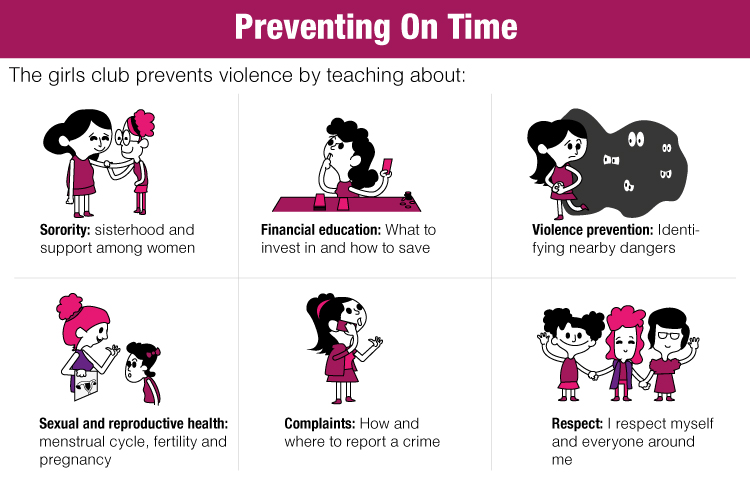
One of the most important topics in the club is sisterhood, or sorority, among girls. For example, in one of the classes they all draw their community and mark their houses, schools, safe places and unsafe places.
“Some girls said that a guy followed them on a bike in certain areas of the community,” says Deweer. “So they take safe routes together when they walk to school or the club.”
If Not Today, Maybe Tomorrow
At the end of the session each day at the Girls Club in Portegolpe I ask them why they think what they learned is useful. There is a brief moment of silence.
Well, now nothing has happened to us,” says one of the more talkative girls, age 10. “But if something happens to us one day or someone tries to do something to us, we know what to do,” she says.
This is one of the points that Deweer has detected that needs improvement. “We have to measure with better indicators the impact of the courses, if there were fewer pregnancies or if they stayed in school, if they were victims of violence,” she says.
Meanwhile, the organization is already working on a plan for a Boy’s Club with topics like positive masculinity in order to show them that there are diverse ways of being a man, not just strong and aggressive. They know that building a community of harmony isn’t for just one team, it’s for both, for everyone.
An Expert Hand
Cepia is willing to advise other community organizations in empowering girls. According to Laetitia Deweer, the cost of developing a Girl’s Club is $3,000. That includes the symbolic payment of ¢30.000 for the mentor, class materials, transportation costs and a trip for the girls at the end of the course.
In the case of Cepia, the funds are donated by companies in the hotel and development industries or come from individuals. But Deweer is considering the option of the communities finding the money from activities like dances or bingos or even requesting formal help from a hotel or company in the community.
If you are interested in training for developing a Girl’s Club, call Cepia at 2653-8533.



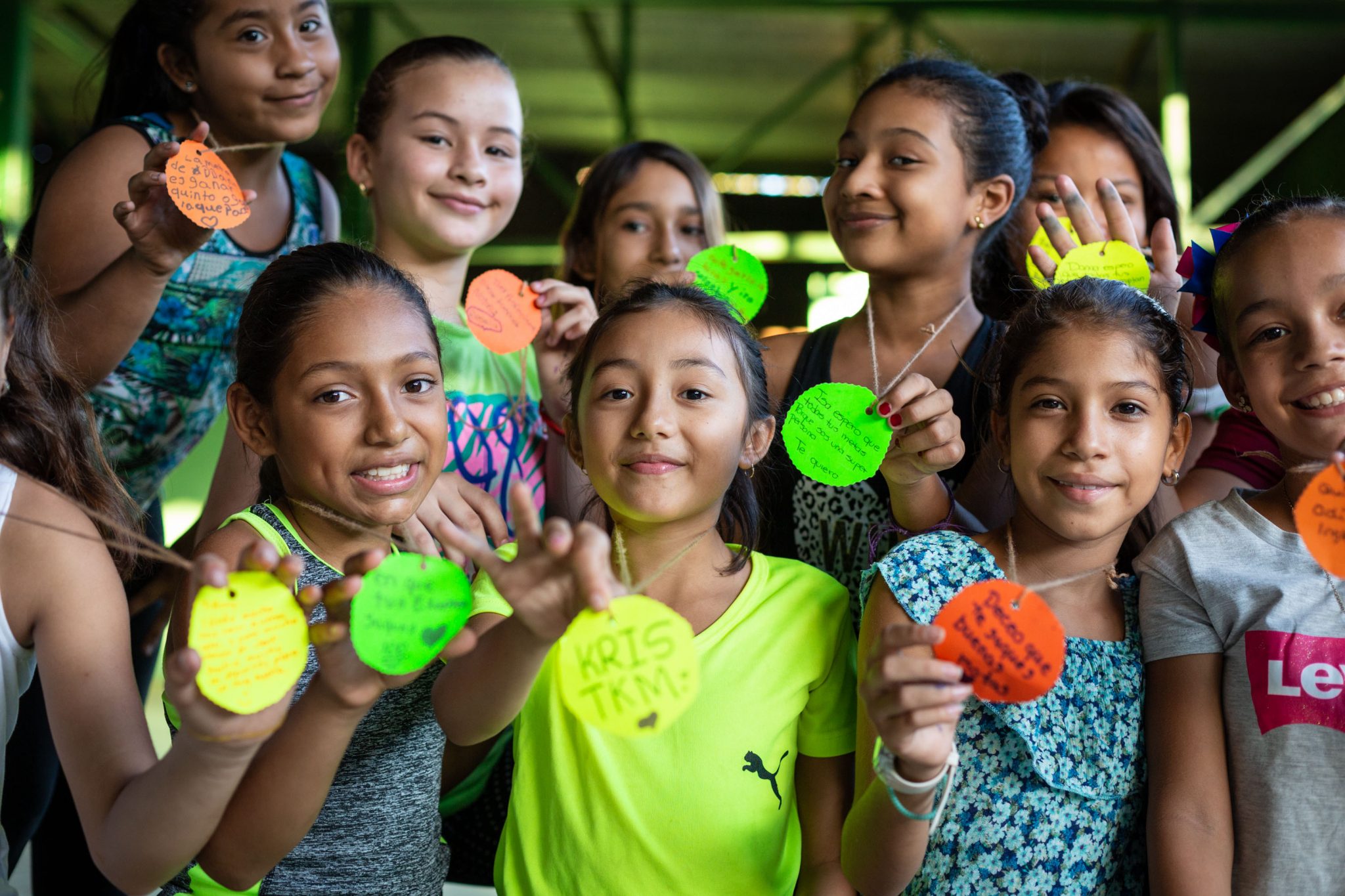
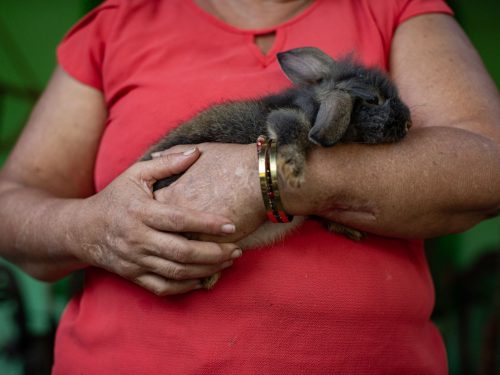
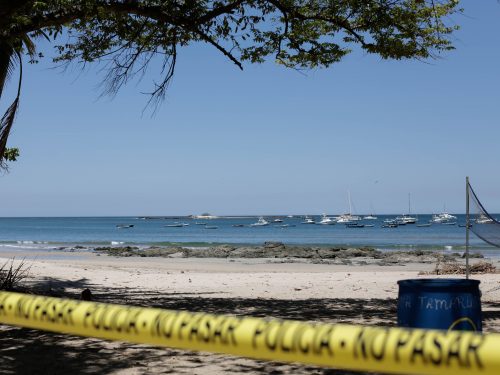
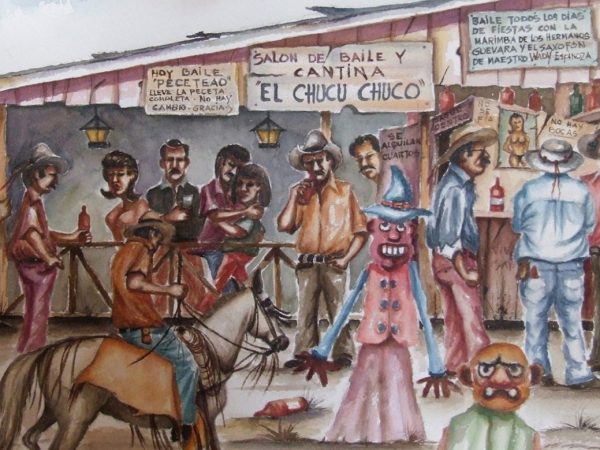

Comments